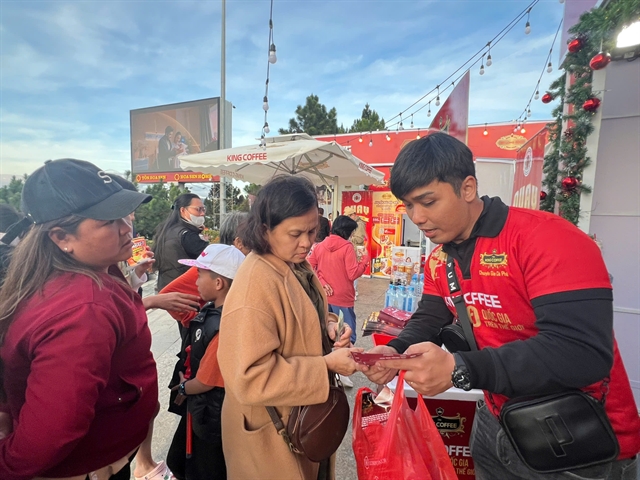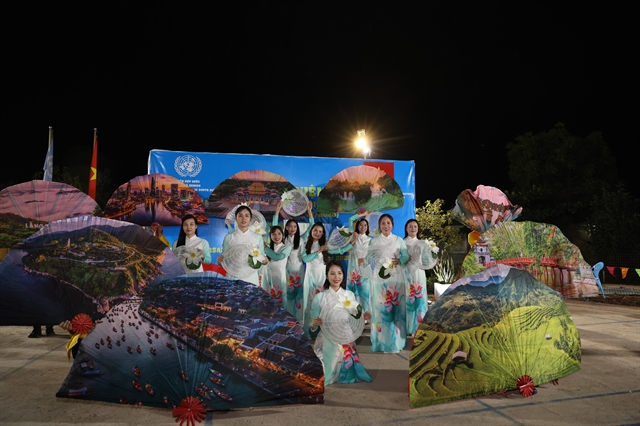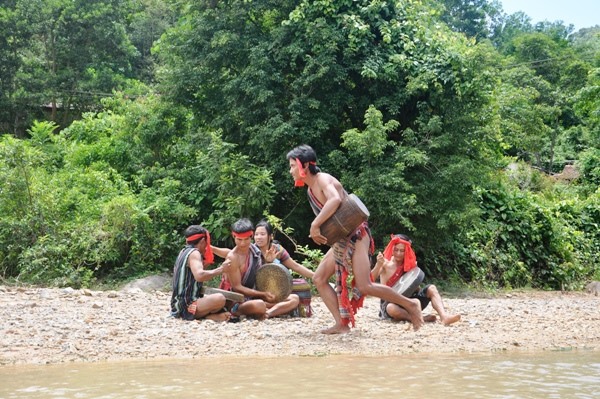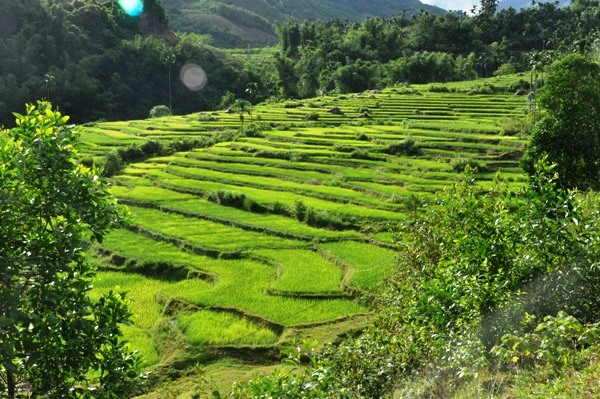 Life & Style
Life & Style

ơn Tây district of the central province of Quảng Ngãi has long been dubbed the "Land of Areca" for its seemingly endless hills covered with areca palms. With mountains on one side and the sea on the other, Quảng Ngãi is also well-known for one of the most beautiful beaches in central Việt Nam, cultural vestiges of Châu Sa Citadel as well as a number of pagodas, including Ông pagoda.
16434621PM.JPG) |
| Cooling water: Thác Lụa waterfall looks like a white silk thread running from the mountain peak to an abyss |
Thùy Linh
Sơn Tây district of the central province of Quảng Ngãi has long been dubbed the "Land of Areca" for its seemingly endless hills covered with areca palms. With mountains on one side and the sea on the other, Quảng Ngãi is also well-known for one of the most beautiful beaches in central Việt Nam, cultural vestiges of Châu Sa Citadel as well as a number of pagodas.
Sơn Tây is the westernmost district of Quảng Ngãi. Located at a height of 400 to 1,700 metres above sea level, nearly 100 kms away from the nearest city and with 80 per cent of the area comprised of mountain and forest, it beckons those seeking a healthy dose of nature.
Driving along curving roads from Quảng Ngãi city, one arrives at the Land of Areca - 1,000 ha of areca palms that are the major source of income for local residents. Areca is everywhere, even scattered on rice terrace fields. The landscape of vertical areca palms and the aromatic scent of its flower have been an inspiration for photographers and artists.
Areca has long been a local treasure – its firm trunk has been used as pillars for houses or rice stores, its leaves for thatch roofing and areca nut is for sale or exchange on special occasions, including engagement and wedding parties. Areca nut and betel leaf are traditional symbols of love and marriage. It is also used as an offering for ancestors and a cure for indigestion.
But Sơn Tây is not only about areca palms. It has golden rice terraces, mountain ranges and crystal clear water streams. Peace and fresh air are in abundance. The silence is only disturbed by the gurgling streams. The landscape is dotted with a few little stilt houses and some ethnic women dressed in colorful traditional costumes.
Sơn Tây is now home to two major ethnic groups - the Ca Dong (about 85 per cent) and Hrê (7 per cent), who preserve their traditional customs and rich culture. Travelers are likely to catch sight of ethnic people wearing traditional brocade-decorated dress that they have made, on their backs a basket that they have woven.
Huy Măng stream in Sơn Dung commune has been recognised as a landscape relic by the province. Water flowing through the cracks between rough rocks creates interesting sounds. Along the two banks are climbing plants, wild flowers and big old trees under which one can cool off. Huy Măng stream, which winds through forested mountains, is nearly 1km long.
Thác Lụa (Silk Waterfall), in Sơn Tinh commune, like its name, looks like a white silk thread running from the mountain peak to an abyss. At the foot of this waterfall lies the curving Xà Ruông stream. Feeling the coolness of flowing water in this stream and letting the playful fish run around one’s legs is a fun experience.
Food is also a highlight of Sơn Tây travel. Grilled fish is a must. Locals use a type of local fish called niêng, which lives in the natural streams and eats algae and moss, giving the fish a unique taste of mild bitterness. Snail broth cooked with local vegetables is also a popular dish for its juiciness. — VNS
 |
| Gurgling streams: Local residents playing gong near a water stream in Sơn Tây district. |
 |
| The color green: Sơn Tây district is a good choice for those wanting to immerse themselves in nature. |
 |
| Multipurpose trees: About 80 per cent of Sơn Tây district in Quảng Ngãi Province are mountain and forest, about 1,000 ha of which are areca palm trees. —Photos sontay.quangngai.gov.vn |




